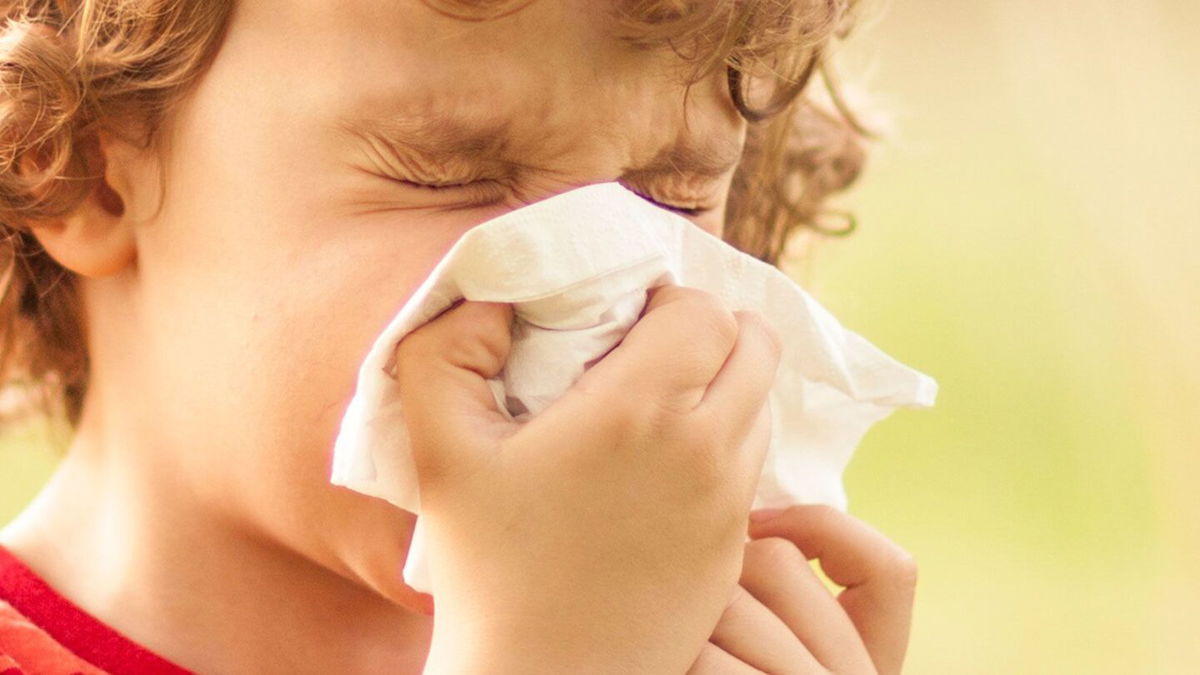Kids with allergies at risk of developing more of them, study confirms

A new study takes one of the largest looks yet at trends in childhood allergies across the United States.
By Giri Viswanathan, CNN
(CNN) — From eczema to hay fever, kids with allergic conditions might be on track to develop others down the road, a new study finds.
The study, published in the journal Pediatrics, looked at the electronic medical records of nearly 220,000 children in the US who were screened between 1999 and 2020. The results provide evidence for a recognized trend called the allergic march, a natural progression of allergy-related diseases from infancy through childhood, at the largest scale yet.
“If a child is diagnosed with one form of allergy, their likelihood of developing a second form is much higher than the general population,” said Dr. David Hill, a pediatric allergy expert at the University of Pennsylvania and one of the study’s authors.
Atopic dermatitis, or eczema, is first in line: Its telltale rashes and dry patches popped up in over 10% of children studied, usually around 4 months of age. Then, at around 13 months old, the study found peak onsets of anaphylactic food allergies and asthma in young kids, with asthma occurring in over 1 in 5 children.
At a little over 2 years old (26 months), the researchers found high rates of acute rhinitis, or hay fever, in 19.7% of kids. By 35 months, a few would go on to develop eosinophilic esophagitis, a rare allergic condition that causes inflammation in the esophagus, as the fifth step along the allergic march.
“This is the first national study done with patient health care data to show that the allergic march is occurring on a national level,” Hill said.
According to the US Centers for Disease Control and Prevention, more than 1 in 4 children have eczema or an allergy. Allergic reactions can include rashes, congestion and watery eyes.
In severe cases, they can cause life-threatening inflammatory conditions like anaphylaxis. And as chronic conditions, they can cause long-lasting impacts on kids’ quality of life.
“These conditions really have a dramatic impact on the lives of children,” Hill said. ”Children with allergies are more likely to get worse grades in school and to miss school. They’re more likely to have anxiety. Food allergy can actually lead to eating disorders.”
Typically, most large-scale research on allergies uses surveys sent to parents. But according to Hill, that approach can create errors. Unlike health care professionals, parents might not be certain what allergies their children might have, potentially mistaking lactose intolerance for a more serious allergy, for instance.
Pulling data from records maintained by health care providers could help improve accuracy, Hill said. The new study, for example, found that the frequency of food allergies in kids is half of what has been reported before, a discrepancy that he attributes to errors in survey-based studies.
However, studies like Hill’s aren’t perfect either, according to Dr. Jonathan Bernstein, president of the American Academy of Allergy, Asthma and Immunology. There might still be variations in how physicians classify patients and errors in how they input diagnoses into the medical record.
Peanuts, eggs and shellfish were the most diagnosed food allergies in kids, according to the new report. And over 13% of kids had two or more allergic conditions, known as a comorbidity.
For example, over 40% of people with asthma also had hay fever, and about half of those with asthma also had food allergies.
Hill was particularly interested in the study’s findings on eosinophilic esophagitis or EoE, a less-understood allergic condition that’s a recent addition to the allergic march sequence.
Although it was thought to be a disease that primarily affected White male children, the study found that 40% of kids with EoE were not white. Meanwhile, a disproportionate number of kids with eczema and asthma were Black.
Previous CDC research on racial disparities in allergy prevalence also indicates that Black children are more likely to have eczema and food allergies than kids from other racial groups. Both the new study and the CDC research identified that Hispanic children have consistently low rates of food allergies.
To reduce the risk of allergies, Bernstein says, early intervention and diagnosis is key. The earliest allergic conditions, like eczema, involve the disruption of the epithelial barrier – the outermost layer of skin – to allow allergens to trigger an immune response.
An early diagnosis and eczema treatment to restore the skin barrier could limit the risk of developing allergies down the allergic march chain.
Bernstein also highlighted key steps, including breastfeeding and minimizing the use of antibiotics for infants, that could help develop a child’s internal microbiome.
“Everybody is born with an allergic predilection,” he said. “It’s what our exposures are after birth, even in utero, which can determine whether we continue to progress to an allergic phenotype.”
The-CNN-Wire
™ & © 2023 Cable News Network, Inc., a Warner Bros. Discovery Company. All rights reserved.